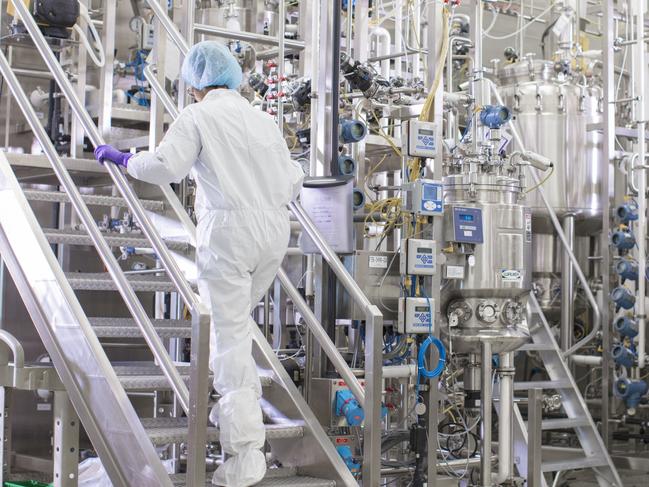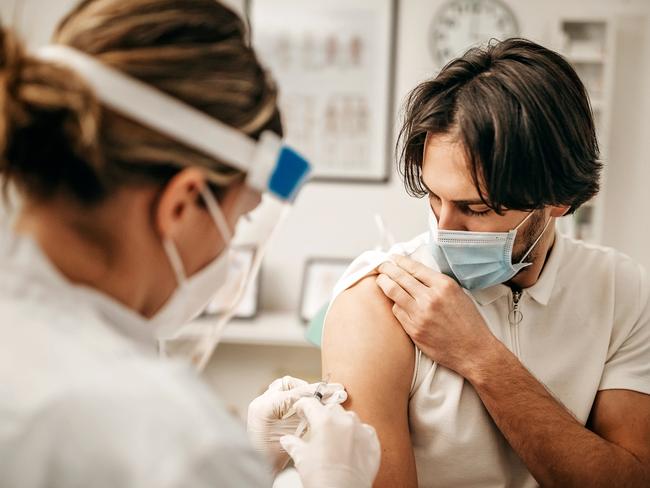Secret behind flu jab boost: How dogs helped improve the standard flu vaccine
Australia’s battle against the flu has literally gone to the dogs with a new, more effective flu vaccine that is built from canine cells.
Health
Don't miss out on the headlines from Health. Followed categories will be added to My News.
Australia’s battle against the flu has literally gone to the dogs with a new, more effective flu vaccine available this week that is built from canine kidney cells.
It comes as experts predict a moderately bad flu season is on the way as people relax their social distancing and there are lower levels of immunity because so few people were infected last year.
For decades Australians have been using flu vaccines that were grown in eggs, a process that can see the virus adapt and change from the type that is circulating in the community making the vaccine less effective.
Australia’s flu vaccine producer CSL has revealed it uses 425,000 eggs per day to produce vaccines when it is running at maximum capacity but the process is time consuming.
Vaccines grown in mammalian cells are faster to produce and are a closer match to the virus circulating in the community and so they work better.

For the first time this year a vaccine grown in a cell line derived from the kidney of a cocker spaniel in 1958, will be available from pharmacies but it will cost $40 – double the price of the normal shot.
University Sydney vaccine expert Professor Robert Booy said the new jab “depending on the season is somewhere between five and 2 per cent more effective”.
“Growing it in mammalian cells you don’t get mutation, you get a clean product, and you get a product that can be produced more quickly,” Professor Booy said.


In the near record flu outbreak of 2017 the flu vaccine was only 33 per cent effective because the egg grown strain of H3N2 influenza included in the shot changed during the production process and it was no longer a good match.
The new jab will not be included in the government’s free flu vaccine program for the elderly and those with chronic health conditions instead it has to be purchased privately.
Professor Booy said it would be more appropriate for the elderly to stick with the current free flu vaccine because the shot has an adjuvant that makes it work better in this group.
The new jab called FLUCELVAX® QUAD will initially be imported but from 2026 Australia’s vaccine producer CSL will be making it here in a new $800 million facility in Melbourne.
It has been approved for use in people aged over nine years.

The vaccine has been used overseas since 2012 and more than 100 million doses have been sold in 8 countries -US, Canada, Italy, UK, Germany, Spain, Taiwan, Austria.
Peak flu season is usually between June and September and Australians are being urged to consider getting vaccinated in late April early May.
An added complication this year is timing the flu vaccination around the COVID-19 jab.
Experts have advised a two-week break is needed between the flu jab and the COVID shot.
“People in phase 1a for COVID-19 vaccination should receive the COVID-19 vaccine as soon as it is available to them, and then receive their influenza vaccine,” the Australian Technical Advisory Group on Immunisation advises.
“People in later phases for COVID-19 vaccination should receive their influenza vaccine as soon as it is available, and then receive their COVID-19 vaccine when it becomes available to them,” the group said.




